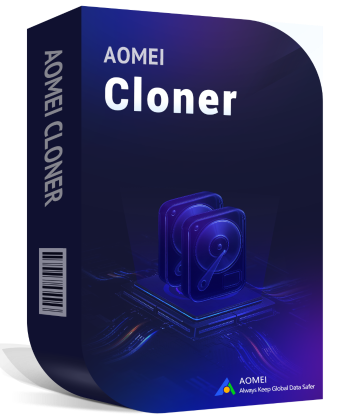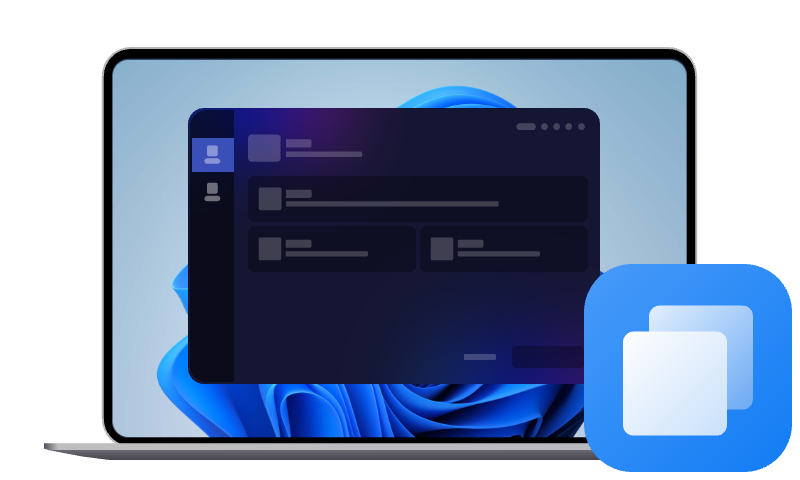Xbox One Hard Drive Failure: Quick Fixes & Easy Replacement
This article illustrates the common Xbox One hard drive failure symptoms, a simple way to replace Xbox One hard drive without data loss, and troubleshooting tips for Xbox One faulty hard drive. Let's get started below.
Xbox One Hard Drive Failure Symptoms
When your console suddenly starts lagging, crashing mid-game, or displaying strange error codes, it’s easy to blame the software. But more often than not, it may point to a deeper issue - Xbox One HDD failure. The hard drive stores your games, saves, updates, and even the system files that power your Xbox. Once the drive begins to fail, the Xbox One may not boot, and your game may be lost. So what are the symptoms of a defective HDD on Xbox One?
❗ Error Messages - Repeated system errors like Xbox One error E101, E102, E200, or "Something went wrong" usually indicate file corruption related to storage problems.
❗ System Freezes or Reboots - Games freeze randomly, or the console shuts down on its own. This often happens during game loading or installations.
❗ Green Screen of Death - The Xbox logo appears and stays there. No menu. No access. This notorious issue is a common Xbox One X hard drive failure symptom.
❗ Games and Apps Not Loading - Installed games won’t launch or apps keep crashing.
❗ Slow System Performance - Menus lag, game load times spike, and the console runs at frustrating speeds.
❗ Strange Noises - Clicking, grinding, or humming sounds from inside the console often mean the physical drive is deteriorating.
❗ Xbox Won't Boot at All -The ultimate sign of a failed hard drive.
If your Xbox One shows one or more of the following signs, don't ignore them, because they may lead to a complete system crash. But don't panic, here are some troubleshooting tips for hard drive failure on Xbox One and one simple solution to replace hard drive for Xbox One SSD upgrade without data loss.
Quick Fixes to Xbox One Hard Drive Failure
This chapter outlines some simple solutions to Xbox hard drive failure. These methods work best when the issue is caused by software corruption or temporary glitches, rather than complete hardware failure. If you wish to directly replace your Xbox HDD with a new HDD or SSD, please turn to the next chapter.
If you replace your Xbox hard drive without data loss, try the disk cloning software for quick and secure data migration.
Way 1. Check the Hard Drive on Another Device
Sometimes the hard drive isn't dead, just misplaced or unrecognized. You can find out by testing the drive elsewhere.
Step 1. Power down your Xbox and carefully remove the hard drive.
Step 2. Connect it to a Windows PC using a SATA-to-USB adapter.
Step 3. Launch Disk Management to see if the drive is detected.
Step 4. Use tools like CHKDSK to scan for bad sectors or hardware health.
Way 2. Restart Xbox Console
Sometimes, all your console needs is a hard reboot to refresh internal settings and remove cached files.
Step 1. Press and hold the Power button on the front of the Xbox for about 10 seconds. Wait until the console fully shuts down.
Step 2. Unplug it from the power source and wait at least 30 seconds.
Step 4. Plug it back in and press the Xbox button again to turn it back on. Check if it boots properly.
Way 3. Update Xbox Firmware
Outdated or corrupted system firmware may cause a crash with symptoms similar to an Xbox One hard drive failure. Here's how to make sure your system is up to date:
Step 1. Press the Xbox button to open the Guide menu. Select Settings > All Settings in turn.
Step 2. Under the System tab, click on Updates.
Step 3. If an update is available, download and install it.
Step 4. Restart your console after the update completes.
Way 4. Reset Your Xbox Console
If all else fails, a reset may restore your system to normal. This resets system files but keeps your data intact. The following is how to reset Xbox One hard drive:
Step 1. Open the Guide menu, and go to Settings to choose All Settings.
Step 2. Navigate to System > Console Info and Updates > Reset Console.
Step 3. Choose Reset and keep my games & apps to preserve installed games and apps. Alternatively, select Reset and remove everything for a full factory reset to resolve Xbox One hard drive failure.
Xbox One Hard Drive Replacement - Easiest Way
A failing HDD can't be repaired once its hardware has aged. So it is highly suggested to replace your Xbox One hard drive before it completely fails. If you are worried about complex data migration, relax! Replacing your Xbox One hard drive is much easier than it sounds - especially with cloning tools like AOMEI Cloner.
This software is an intuitive disk cloning tool that makes data transfer from HDD to SSD super easy, even for beginners. It ensures you don't have to reinstall everything from scratch or lose your data if the old drive is still readable. Some of its standout features include:

- Sector-by-sector clone: Copies every bit of data, even hidden system files, ensuring a bootable replacement.
- Intelligent clone: Copies only used space, saving time on large drives.
- SSD optimization: Ensures better performance and longer life if upgrading from HDD to SSD.
- Support File Systems & Disks: Work perfectly with NTFS, FAT32, exFAT, FAT16, and other file systems and support cloning HDD to SSD, HDD to HDD, and SSD to SSD.
Follow these steps for a smooth Xbox One HDD replacement process with the help of AOMEI Cloner:
Step 1. Remove the Xbox Hard Drive
Power off your console. Use a prying tool and screwdriver (usually Torx T8 or T10) to open the case and detach the old Xbox hard drive.
Step 2. Connect Both Drives to PC
Attach both the old drive and the new SSD/HDD to your PC via SATA-to-USB adapters.
Step 3. Download and Run AOMEI Cloner
Download the AOMEI Cloner software and open it. Go to the Clone tab, and select Disk Clone.
Step 4. Clone Xbox One HDD to New Drive
- Choose your Xbox One drive as the source. Choose your new drive as the target.
- Tick SSD Alignment if the new drive is an SSD, and enable Sector By Sector Clone if you want to copy all parts to new disk. Finally, click Start Clone.
- Note: Do not use the Sector By Sector Clone option if there are bad sectors on your Xbox HDD. Alternatively, this software will run Intelligent Clone, by default, to clone only the used parts, which allows you to clone hard drive with bad sectors by skipping them to ensure a secure boot.
Step 5. Reinstall the New Drive into Xbox
Once cloned, disconnect the drives and insert the new one into the console, ensuring all screws and cables are secure.Turn on your Xbox. The system will boot up like nothing changed.
FAQs about Xbox One Hard Drive Failure
#1. Why is my Xbox One disk drive not working?
Various factors can lead to an Xbox One corrupted hard drive:
- Mechanical failure due to wear and tear.
- Dust or debris interfering with the laser reader.
- Loose internal connectors or damaged SATA cables.
- System errorsare tied to the hard drive corrupting disk read functions.
#2. Can Xbox One HDD failure be fixed?
It depends. If the issue is software-related, like corrupted system files or firmware, it can often be resolved through resets, updates, or reformatting. However, Xbox One HDD failure caused by physical damage, overheating, or bad sectors typically cannot be fixed. Replacement is the only viable solution.
#3. Can I reset my Xbox without losing everything?
Yes, Xbox provides a partial reset option.
- Choose Reset and keep my games & apps to preserve game files and installed apps.
- Your user profile and saved data will remain intact if they’ve been backed up to the Xbox Cloud.
- If you're not connected to Xbox Live, be sure to sync your data before resetting.
Concluding Words
An Xbox One hard drive failure doesn't have to mean that the drive is completely useless. Whether your console is slowing down, experiencing errors, or failing to boot, you now know what to look for and what to do. Early signs, such as unusual noises or error codes, can't be ignored.
With AOMEI Cloner, you can clone a failing drive to new disk with ease. It is widely supported on Windows 11, 10, 8, 7, and all Windows Servers. You can also use it to migrate only the OS to a new HDD/SSD, and create bootable USB for offline data cloning. Get it now to have a try!

